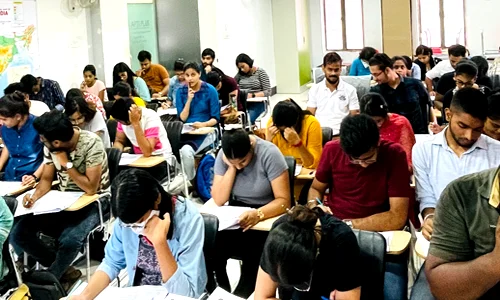



India aims to build a sovereign, inclusive AI ecosystem by adapting its DPI model. The IndiaAI Mission plans national compute capacity, quality data platforms and strong DPDP-based governance to expand access, support innovation and protect sovereignty. The approach seeks citizen-centric growth and a competitive global position.
Click to View MoreIndia entered 2025 aiming to eliminate TB but remains far from the goal. Despite free treatment and programme reforms, India still accounts for over a quarter of global cases due to stigma, underinvestment, private sector dependence, weak awareness and poor prevention. Politically prioritising TB, integrating socio-economic determinants and strengthening surveillance are key to moving from intent to impact.
Click to View MoreWhat is Alaknanda Galaxy?
Indian astronomers from the National Centre for Radio Astrophysics (NCRA-TIFR), Pune, have discovered a spiral galaxy named 'Alaknanda'.
Click to View MoreSanchar Saathi is a digital security platform developed by the Department of Telecommunications to help citizens report suspicious communication, block and trace lost or stolen phones, and check unauthorized SIM cards issued in their name. With cyber fraud rising sharply, the government has asked smartphone makers to preinstall the app to ensure universal access to its safety features. By integrating tools like Chakshu and the Central Equipment Identity Register, Sanchar Saathi strengthens India’s mobile security ecosystem and empowers users to protect their digital identities.
Click to View MoreIndia faces a stark choice: secure digital sovereignty or slip into a subtle digital raj. As data becomes strategic capital, surrendering regulatory space will choke innovation. By strengthening DPI, pursuing digital industrialisation, and guarding data control, India can ensure self-reliance and unlock trillion-dollar growth for the future.
Click to View MoreMoss spores have demonstrated the ability to survive prolonged exposure to space conditions, including vacuum, cosmic radiation, and temperature extremes, while remaining capable of reproduction. This remarkable resilience highlights the potential of moss in supporting sustainable life-support systems, oxygen generation, and soil formation for future extraterrestrial habitats, while also advancing our understanding of life's limits and interplanetary survival.
Click to View MoreIndia is crafting an Integrative Health Policy to combine modern medicine and AYUSH under 'Health in Harmony', tackling NCDs, mental health, and AMR. Success needs stronger research, rigorous regulation, patient-centred care, and trust-building to overcome evidence gaps and governance weaknesses for equitable national health outcomes.
Click to View MoreComet 3I/ATLAS is the third confirmed interstellar object and one of the oldest cosmic bodies ever observed, likely over 7 billion years old. Travelling on a high-speed hyperbolic path, it originates from the Milky Way’s thick disk—unlike earlier interstellar visitors—making it a rare sample of ancient galactic material. Its active coma, large nucleus, and presence of water ice and complex organics provide valuable clues about early planetary environments, organic chemistry, and the evolution of stellar systems beyond our Solar System.
Click to View MoreIndian scientists have created an indigenous, IP-free gene-editing tool using TnpB proteins, offering a cheaper alternative to CRISPR-Cas9. It enables precise edits without foreign genes, supporting resilient, nutrient-rich crops. Despite eased rules for SDN-1/2 crops, regulatory gaps, ethics, and public distrust after the GM Mustard debate remain major hurdles.
Click to View MoreIndia is redefining global TB eradication efforts through rapid, point-of-care molecular diagnostics that enable early, accurate detection even in remote settings. Indigenous technologies such as Truenat have accelerated diagnosis, improved treatment initiation, and strengthened primary healthcare delivery. International case studies from Nigeria, Mozambique, and Tanzania demonstrate their global impact. However, challenges such as high operational costs, supply chain gaps, limited digital connectivity, and the need for integrated nutrition and social support remain. With sustained investment, stronger partnerships, and equitable access, India can lead the global shift toward inclusive and effective TB control.
Click to View MoreIndia’s NAP-AMR 2.0 (2025–2029) adopts a One Health approach and, for the first time, assigns budgeted responsibilities to over 20 ministries. It strengthens governance, surveillance, infection control, and stewardship, but its success depends on funding, regulation of the unorganised sector, and behavioural change.
Click to View MoreNeurotechnology refers to tools that read or influence brain activity, offering major benefits in healthcare, communication, and assistive devices. However, it raises serious concerns about mental privacy, manipulation, data misuse, and human autonomy. UNESCO’s 2025 recommendations provide the first global ethical framework to ensure responsible innovation, protect neural data, safeguard cognitive freedom, and prevent harmful uses in political, commercial, or medical settings. The way forward lies in strong regulation, recognition of neurorights, secure handling of neurodata, and promoting ethical and inclusive technological development.
Click to View More
© 2025 iasgyan. All right reserved